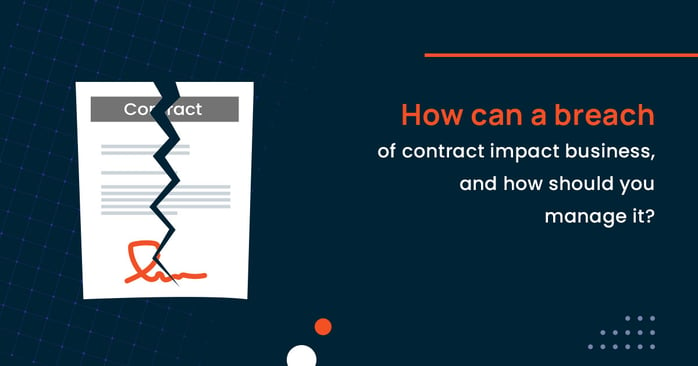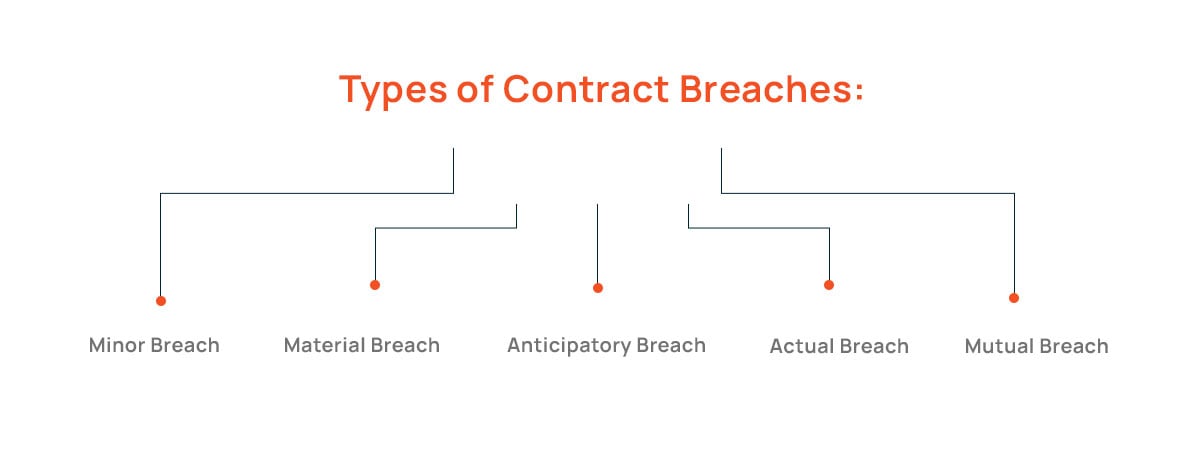Are you ready to learn more?
Talk to one of our policy management experts today!
Policy management resources, best practices articles, guides and how-to's can help optimize your processes.
Contract management resources, articles, guides and how-tos can help you improve efficiency.
Resources, best practices, articles, guides, and how-tos to effectively manage incidents.
Articles and guides on conflict of interest disclosure on how to properly handle potential conflicts.
Strategies on building frameworks for managing risks and staying up to date with regulatory developments.

The management of contracts within your organization can be challenging, making it possible to unintentionally violate an agreement. As contracts become increasingly intricate, there is a higher likelihood of accidental breaches occurring, such as failing to meet deadlines, delivering the wrong or damaged product, or making incorrect payment submissions.
For instance, let's consider a situation where a contract specifies that in the case of a late payment, the responsible party must pay a fee of $50 in addition to the missed payment. If the contract does not outline the repercussions for a particular breach, the parties involved may resolve the issue through mutual agreement, potentially resulting in the creation of a new contract, adjudication, or another form of resolution.
Let's delve deeper into the matter. A breach of contract takes place when two or more individuals enter into an agreement, and at least one party fails to fulfill their obligations as outlined in the contract, without a valid legal justification. Once all parties involved reach an agreement, they are bound by contractual obligations, thus rendering the contract legally enforceable.
Similar to the diverse range of contract formats, there are multiple ways in which contracts can be breached. Let's explore some of the most prevalent types of contract breaches and the subsequent consequences that may follow.
 Minor
Minor In the case of a minor breach, one party fulfills the delivery of goods and services but fails to meet the specified deadline. However, if a contract explicitly states that "time is of the essence," missing the deadline becomes a significant issue. The typical resolution for such a breach involves fulfilling the original agreement and compensating for any damages incurred as a result of the delay.
In the event of a material breach, one party violates a crucial term of the contract, which strikes at the core of the agreement and renders it irreparably broken. An example of such a breach could be if you placed an order for reams of paper, but instead received boxes of pens. In this scenario, the other party disregarded the contract entirely by providing different items than what was originally agreed upon.
An anticipatory breach arises when one party possesses prior knowledge that they will not fulfill their contractual obligations. In such instances, the other party is not obligated to undertake any further actions as per the contract. The party in breach is responsible for compensating any damages resulting from this type of breach.
An actual breach occurs when one party entirely fails to fulfill the contractual terms. As the other party, you have the discretion to determine the most suitable course of action for your business, which may include:
Instances may arise where both parties mutually agree to breach the contract. Such a situation can occur when there are significant changes in the underlying markets or when the companies find themselves in altered circumstances. In such cases, all parties involved may opt to establish a new contract while rendering the old one null and void. Thus, a contract breach becomes a desirable outcome for everyone involved.
Maintaining control over all your responsibilities can be challenging. It requires effectively managing the dates, objectives, and specific details of all the contracts within your system, regardless of whether you are the contracting party or the counterparty. While avoiding legal disputes is preferable, breaches of contract may unfortunately lead to litigation.
The ConvergePoint contract management software serves as a centralized repository for all your contracts. It allows convenient access for all stakeholders to review relevant contracts based on their roles. For example, one department can sort contracts in a list based on their due dates, while another department can retrieve all contracts associated with a particular vendor. This ensures that your organization possesses a single authoritative copy of each contract, eliminating concerns about misplacing or losing important documents. Furthermore, it is convenient to identify the stakeholders in breach discussions, evaluate contract performance for agreement violations during the renewal procedure, and make contract amendments to safeguard against future breaches.
In addition, the ConvergePoint software comprehensively addresses the entire lifecycle of contracts. Previous actions can serve as valuable references when creating new activities. Your actions can be monitored and stored in the 'Activity History' section, allowing you to access prior versions and view a detailed record of the document's history.
The contract management lifecycle encompasses three main areas: contract creation, negotiation and approval, and post-approval execution and administration. Within these areas, there are nine steps in the lifecycle:
These steps guide the process from the beginning to the end of managing contracts effectively.
Artificial intelligence will provide guidance for your workplace throughout the entire process, starting from negotiation and continuing until fulfillment. Automation plays a crucial role in monitoring and tracking potential breaches. Subsequently, the contract progresses to the next party. Once the process is complete, the system learns from successful outcomes and suggests those terms for future contracts. In the repository, where the final approved documents are stored, there is a designated column called 'Obligation tasks' for creating obligations. As contractual duties and responsibilities must be clearly outlined in the contract, this is another specific feature that helps prevent breaches of obligations.
The ConvergePoint contract management software offers a means to seamlessly integrate contracts, including the management of breaches, into your everyday business operations. This software provides a unified and centralized platform to effectively store and utilize all your contracts, along with their associated dates and penalties, helping to mitigate breaches. It ensures comprehensive tracking of contracts throughout their entire lifecycle, while the automation capabilities keep the process moving forward smoothly.
Are you ready to learn more?
Talk to one of our policy management experts today!